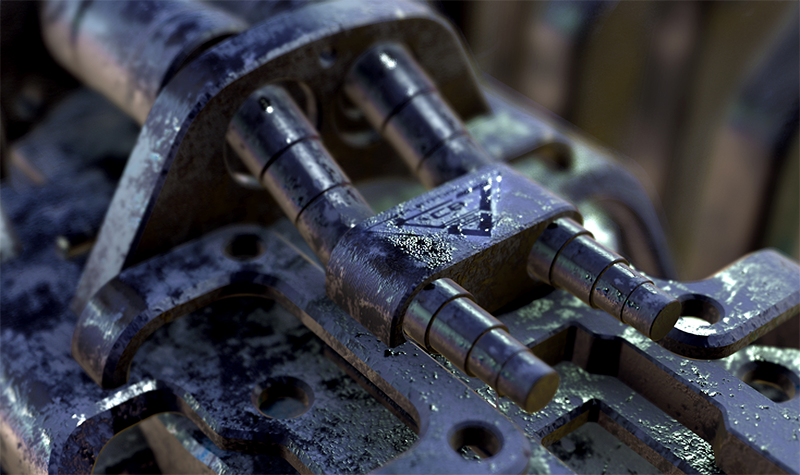Physically-based rendering (PBR) is a shading method use to accurately represent the interaction of light with surfaces.

Image courtesy of Mads Drøschler
About PBR Materials
PBR is used by many real-time engines to describe a set of simplified shading models wholly driven by a small set of texture maps. While these shading models are already supported by the Physical Material, PBR contains many other unsupported features. For this reason, these simplified scripted materials have been created, with a front-end UI provided for the Physical Material.
The Metal/Rough model is comprised of:
- a base color called 'albedo' that defines the color of all kinds of reflection
- a 'metalness' parameter that defines if the reflection is diffuse with a white specular layer or metallic (where there is no diffuse reflection, the reflection takes on the base color)
- and a parameter called 'roughness' that defines how smooth (a low value) or rough (a high value) the surface is.
The Spec/Gloss model is comprised of:
- a base color called 'albedo' that defines the diffuse reflection only
- a separate reflection color called 'specular' that defines the color of reflections separately
- and a parameter called 'glossiness' that defines how smooth (a high value) or rough (a low value) the surface is.
Though giving more freedom to select colors, the Spec/Gloss model does not guarantee that the resulting surface will behave in a physically plausible manner, so user intervention may be required. The Metal/Rough model however ensures for the most part that the behavior of the surface material will make physical sense.
The purpose of these simplified materials not only to reduce UI complexity, but also to facilitate the export of material data to real-time engines. If a scene is built using these materials (selecting the one that matches the model used by the target engine), any look development performed within 3ds Max will be identical in the engine.
Another use-case for PBR is to utilize materials intended for a real-time engine inside 3ds Max, both in the viewport or for final rendering. Many websites offer downloadable PBR maps that can be dropped straight into these materials.
A key feature is that they automatically handle some setups needed when using PBR maps, including setting a linear gamma (1.0) on roughness, glossiness, metalness and normal maps.
As a result, all map slots can accept bitmap files drag/dropped straight from the Windows explorer. There are many free texture maps available to download from the web, which you can save and then drag and drop directly onto a corresponding map button shown under the PBR material parameters.